Central Virginia 12/7-8/12
All photos are © Marshall Faintich
One of the dilemmas faced by birders is whether or not to travel outside of your local area to search for a rare or new "life bird" that might or might not be there when you get there. On 12/6, Chris Murray, an expert birder from Crozet, reported some interesting birds: 15-20 Red Crossbills at Sawmill Ridge Overlook on Skyline Drive, and 3 Scaup on the pond at Old Trail in Crozet, one of which he thought was a Greater Scaup, in addition to 5 Ruddy Ducks and 2 Ring-necked Ducks on the same pond. Sawmill Ridge was the overlook I marked last summer as a good spot on Skyline Drive to look for certain warbler species that preferred coniferous trees. Pete Myers, an expert birder from Charlottesville who specializes in lake and shore birds, went to Old Trail, studied the Scaup for more than 30 minutes through a scope, and concluded that it was most likely a Greater Scaup. Also on 12/6, Allen Larner reported a Short-eared Owl near the Bell's Lane ponds in Staunton, VA, and there have been reports of a Ross's Goose both near Elkton, VA and near Bridgewater, VA.
I had previously seen and photographed Scaups in local area lakes and ponds, but always assumed that they were Lesser Scaups as the two species are difficult to distinguish, and Lesser are more common here. I have only seen and heard a Red Crossbill one time and did not get any photos, and the same habitat supports White-winged Crossbills that I have never seen. A Ross's Goose would also be a new life bird for me, and the only Short-eared Owls I photographed were last winter at a great distance near Zion Crossroads.
So the stage was set for me to try a mini-grand tour in search of new life birds and better photos.
December 7, 2012
I started my grand tour at the Old Trail pond. The skies were overcast, and were supposed to be that way all day long. In the pond I saw four Ruddy Ducks, two Ring-necked Ducks, and two Scaup. Was one of them a Greater Scaup? To make the identifications more difficult, most of the time I was there, all of the ducks kept their head tucked under a wing so they could sleep, and only occasionally lifted their head.
Before getting to the photos, consider the differences between Lesser and Greater Scaup. I looked at several references, and even some of the photos in the references looked like they were mixed up. The best reference I found for Scaup was Kenn Kaufman's Advanced Birding, but I think that actually seeing the two species together many times is really the only good way to be able to distinguish between them. The easiest way to separate the two species is by the white wing stripe extending into the primary wing feathers on the Greater Scaup, but this cannot be determined unless they are in flight.
Size: Lesser Scaup is 16.5 inches long, and Greater Scaup is 18 inches long, but this is nearly impossible to gauge with a single Scaup, and foreshortening is a problem even when both species are present.
Color of head gloss: Purple on Lesser and greenish on Greater, but not as reliable a field mark as head shape and bill shape.
Flanks: Whiter on Greater and mixed with more gray on Lesser, but difficult to determine in the field.
Head shape (figure is from Kaufman's book). Lesser has highest point to the back of its head that comes to a peak, although the point may appear rounded after diving. Greater has highest point near the front of its head and back of its head is rounded.
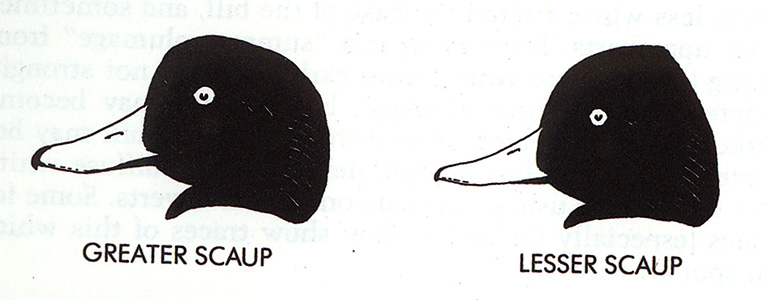
| | |
Bill shape and bill nail size (figure is from Kaufman's book). Lesser has smaller and more rounded bill. Greater has a larger bill and straighter edge near front, and is somewhat deeper at the base. Bill nail on Lesser is smaller and has straighter sides. Bill nail on Greater is larger and tends to spread out in a more tiangular shape, but is not as large on all Greaters as shown in the diagram.

| | |
To make matters worse, Scaup x Ring-necked hybrids exist, and the Ring-necked is 17 inches in length and has a head shape similar to Lesser Scaup. One of the Ring-necked Ducks I saw on the pond was a female, but the other one had the yellow eye color and dark head of a male Ring-necked, but the brownish color of a female, and I assume that it was a juvenile male.
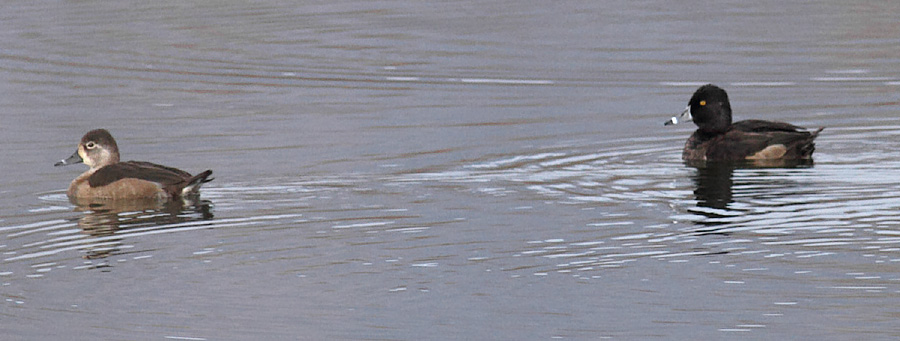
Ring-necked Ducks
In the next photo you can see one of the Ruddy Ducks, the juvenile Ring-necked Duck, and the male Scaup. The Scaup appears to be about the same size as the Ring-necked, and its bill shape looks somewhat straight near the tip. Its head looks highest near the front and rounded at the rear.

In the next photo you can see one of the Ruddy Ducks, the juvenile Ring-necked Duck, and the male and the female Scaup. The Scaups appear to be about the same size and smaller than the Ring-necked, and both Scaups seem to have peaks at the rear of their heads.

Here you can see the female Scaup and the Ring-necked, and the female Scaup looks smaller than the Ring-necked.

| | |
In this photo, you can see some gray in the flanks of the male Scaup, and the bill looks rounded.

| | |
But in this photo, you can see the greenish head gloss, a somewhat wedge-shaped bill nail, and the front edge of the bill looks straighter. The base of the bill also looks deep and more like the Greater that is shown in Kaufman's bill diagram.

| | |
Similar comments in this photo as the one shown above.
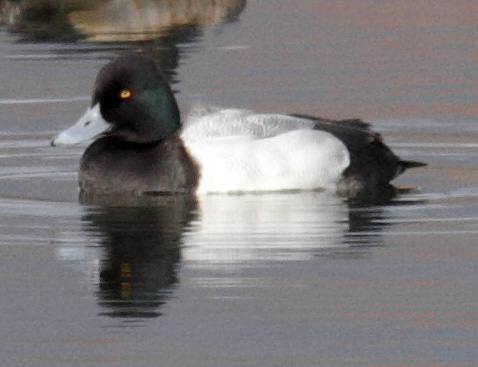
| | |
The wedge-shaped bill nail and deep base are even clearer in this photo.

| | |
After looking at all the photos, I still am not sure if the male is a Lesser or a Greater, as the bill nail is wedge-shaped, but not as broad as depicted in the diagram. The base of the bill is deep like that of a Greater as depicted in the diagram, but some of the photos seem to show a peak at the rear of its head, and the male doesn't appear to be larger than the Ring-necked. What do you think?
I reviewed previous photos I had taken of Scaup. The one below shows a flock of Scaup and one Ring-necked taken on Lake Monocan here in Stoney Creek last March 3. I had asumed that they were all Lesser Scaup, but the back of their heads on most of them look rounded. Could they be Greater Scaup? Opinions on these Scaups are appreciated as well.
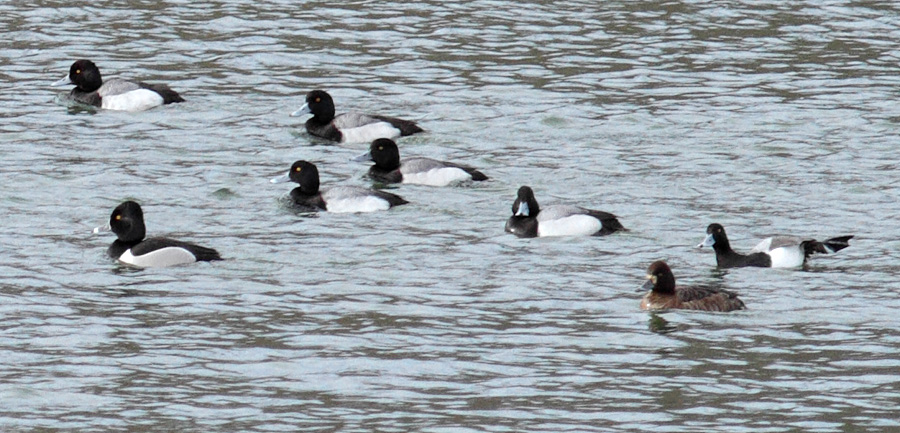
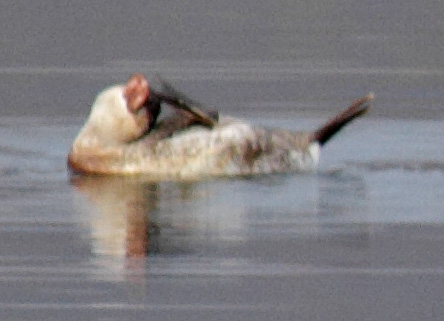
Ruddy Duck scratching an itch?
The next part of my grand tour was Skyline Drive. I entered at the south end (mm 105), and drove all the way to Pocasin Cabin (mm 59.5). There were very few cars on the entire drive. I stopped at all the overlooks and slowed down wherever I saw clusters of coniferous trees. All I saw were two Pileated Woodpeckers, two Red-tailed Hawks, dark-eyed Juncos, and a few other small birds - no Crossbills, and not a single bird at Sawmill Ridge Overlook.
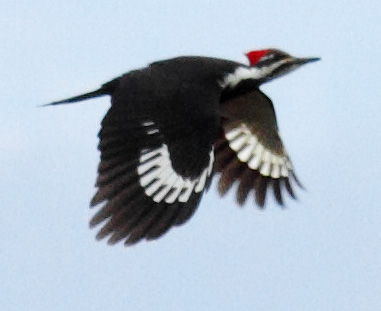
Pileated Woodpecker
| | |
I back-tracked on Skyline Drive to the route 33 exit, and headed over to Elkton to look for the Ross's Goose. I was not very familiar with the area, and when I passed a small swamp area going south on route 340, I didn't see anything and didn't know to look farther in and away from the road. I thought the pond with the Canada Geese and Ross's Goose might be farther down the road, but soon realized I had passed the area and decided not to back-track. It turns out that another birder looked for the Ross's Goose this day in the Elkton swamp area and did not see it.
Even though it was early afternoon, I thought I might have a chance of seeing the Short-eared Owl by the time I got to Bell's Lane because of the overcast skies, but all I saw there were some Turkey Vultures, Canada Geese, some small ducks that I could not identify because they were so far away, and a couple of distant shore birds - Spotted Sandpiper? and Killdeer?
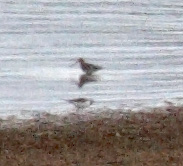
Shore birds
| | |
My next stop was at the pond behind the Days Inn just off Bell's Lane. The pond was very low, and all I saw there was a Great Blue Heron.
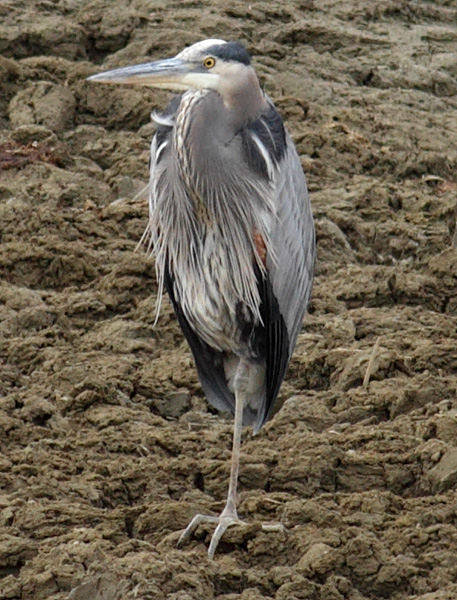
Great Blue Heron
I finished this day's grand tour stopping in Stuart's Draft, first along Hall School Road where all I saw was a female American Kestrel, and then at the pond behind Kohl's where a female Ruddy Duck was swimming while a Belted Kingfisher watched.
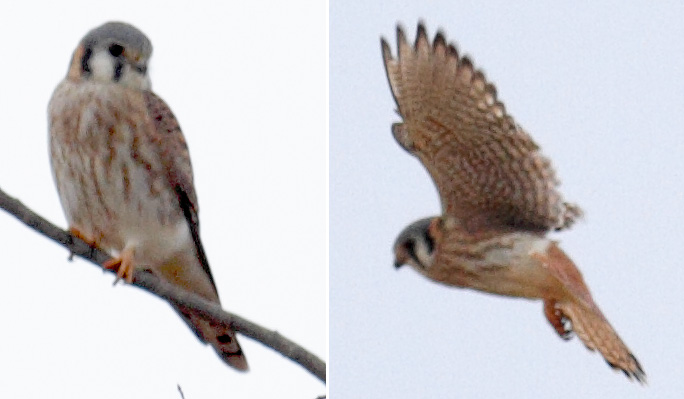
American Kestrel
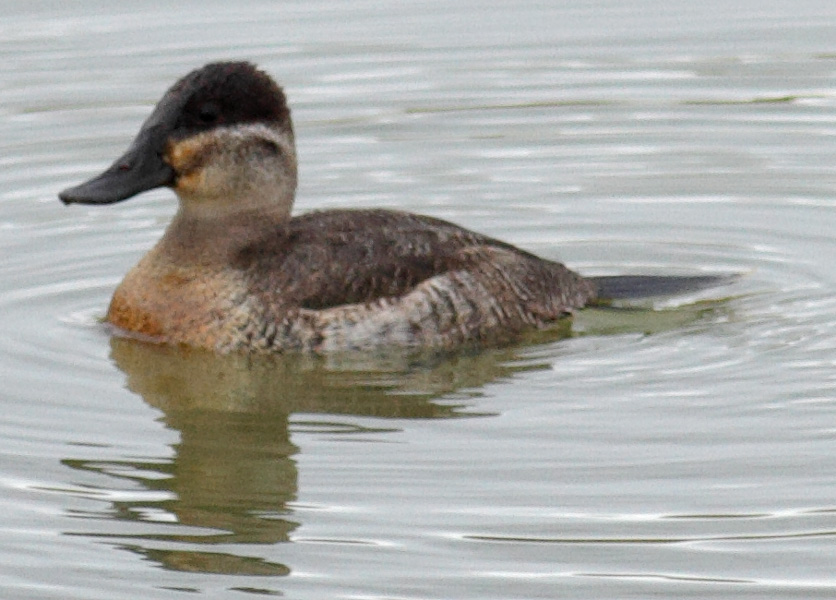
Ruddy Duck
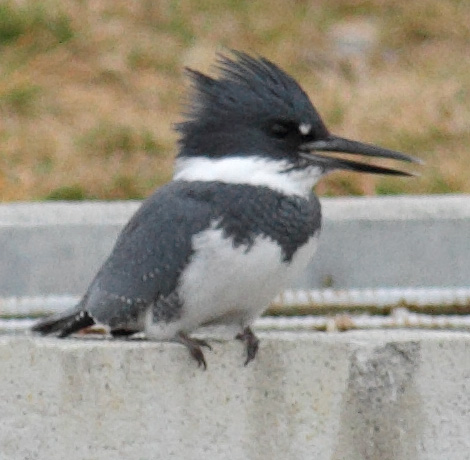
Belted Kingfisher
December 8, 2012
It was supposed to be cloudy all day today, but there was bright sunshine amd warm temperatures. Walt Childs and I decided to do a variation of yesterday's grand tour. We skipped Old Trail, and headed first to Elkton to look for the Ross's Goose. This time the drive was north on route 340 rather than taking the slower Skyline Drive. We stopped at a few places, but only had about 20 common species by the time we approached Elkton. We got off route 340 just south of the Coors plant, and followed a small road along the river where we saw two Red-tailed Hawks. The second one decided to show off and flew multiple circles above our heads.

Red-tailed Hawks

Red-tailed Hawk
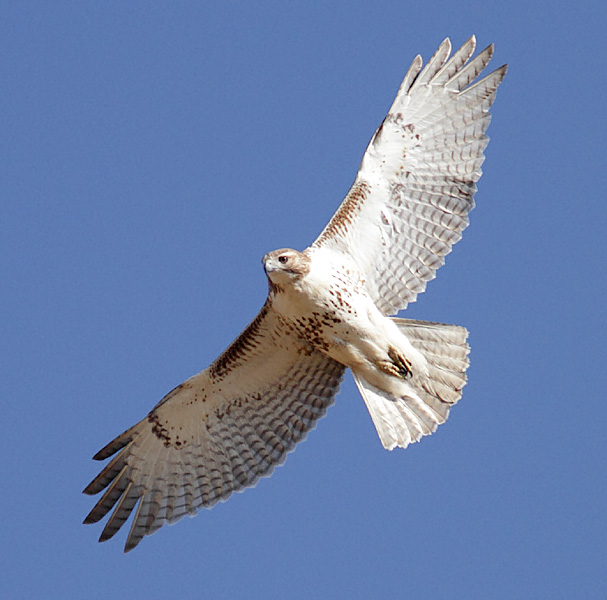
Red-tailed Hawk
We pulled off route 340 by the swamp area, and this time I could look throught the trees and see the larger pond. As soon as we got there, Greg Moyers from Rockingham showed up and joined our search for the Ross's Goose. But all we saw were lots of Canada Geese and a couple of American Black Ducks, the latter being the first ones I have seen in Virginia (I had seen American Black Ducks in New Hampshire).
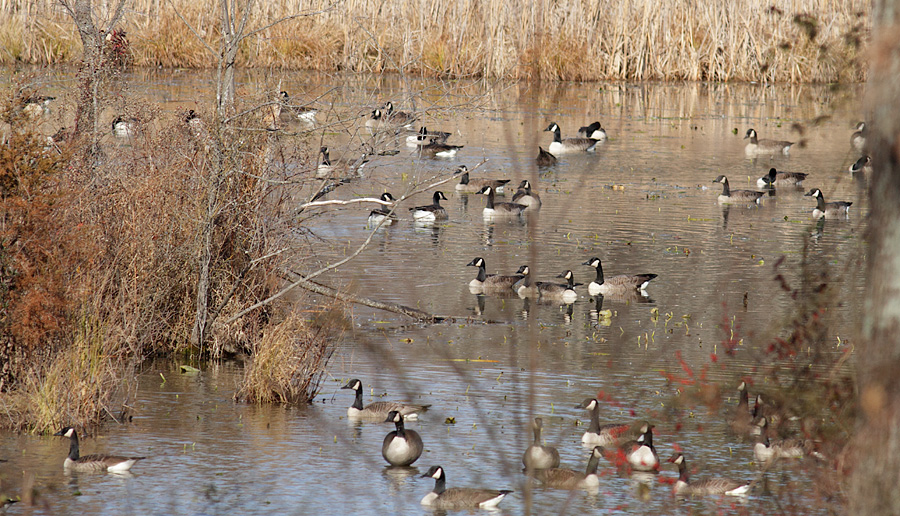
Canada Geese

American Black Duck
Walt and I walked down a bit to the swampy area adjacent to route 340, and saw several Rusty Blackbirds, a Flicker, a Purple Finch, a Mockingbird, Northern Cardinals, and Song and White-throated Sparrows there.
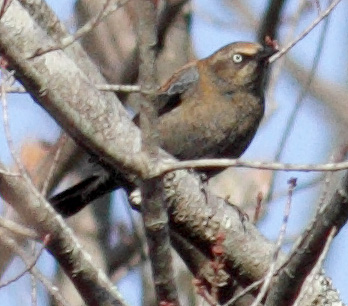
Rusty Blackbird
Our next stop was Leonard's Pond, where we saw mostly Canada Geese, a few Mallards, and a small flock of Killdeers. Some of the Killdeers were bathing in the pond, and one of them looked like an immature bird with only a single broad breast band.
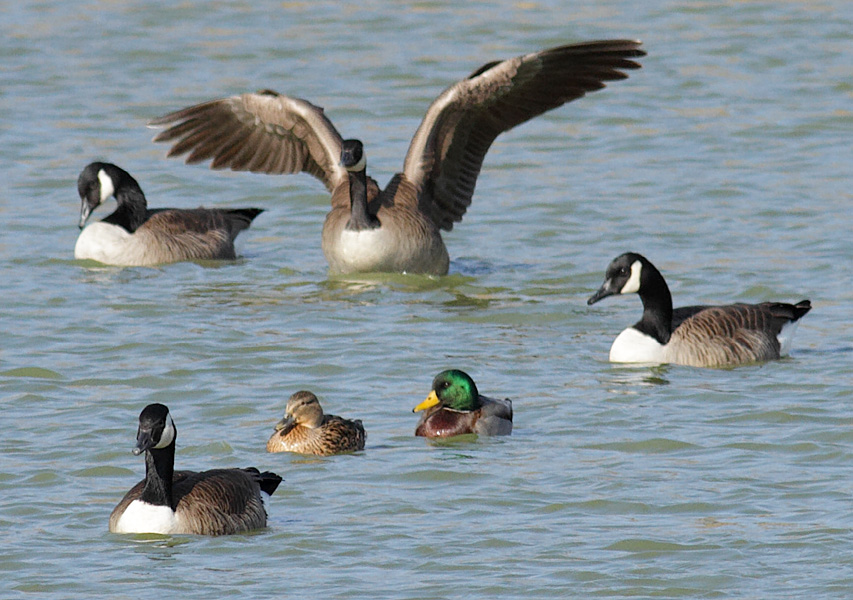
Mallards and Canada Geese
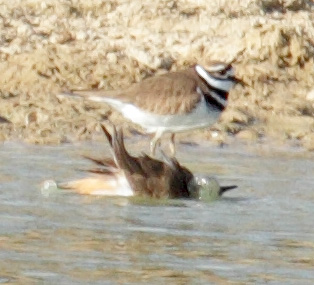
Killdeers

Immature Killdeer
In a nearby pond, we saw more Mallards.
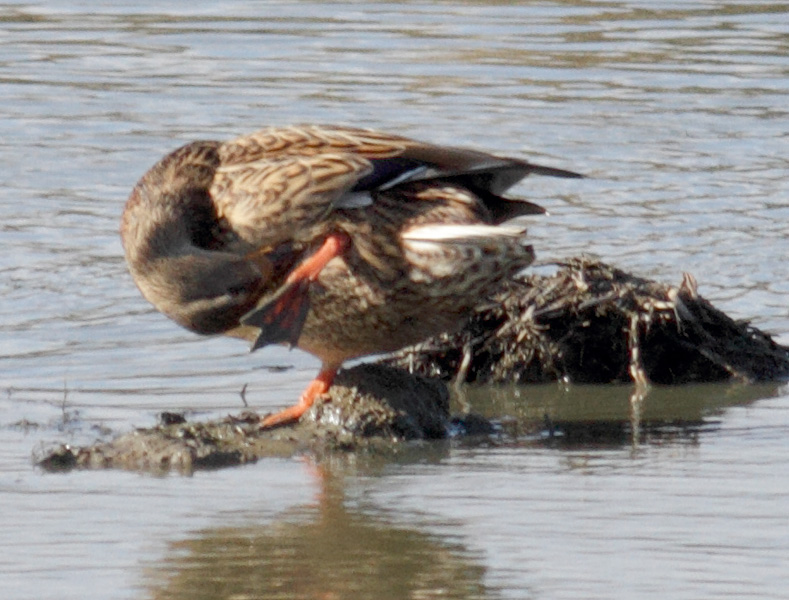
Don't forget to wash behind the ears!
We tried Bell's Lane and saw the same birds as I saw the day before, and the Great Blue Heron was still in the pond behind the Days Inn. It was getting late in the afternoon, but we headed for Stuart's Draft. We first drove along Guthrie Road where we saw a beautiful, lightly colored Red-tailed Hawk, and a flock of several hundred
Starlings. Along Hall Scool Road we saw a male American Kestrel and a juvenile Northern Harrier.

Red-tailed Hawk

Starlings
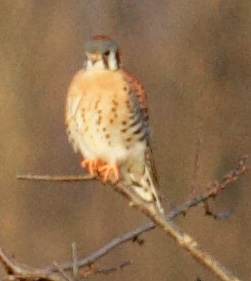
American Kestrel

Northern Harrier
Our last stop was a the pond behind Kohl's. The female Ruddy Duck, our 34th species of the day was still there. We were surprised to see a beaver in this small pond. A lone Red-tailed Hawk, our 8th for the day, watched the setting sunset.
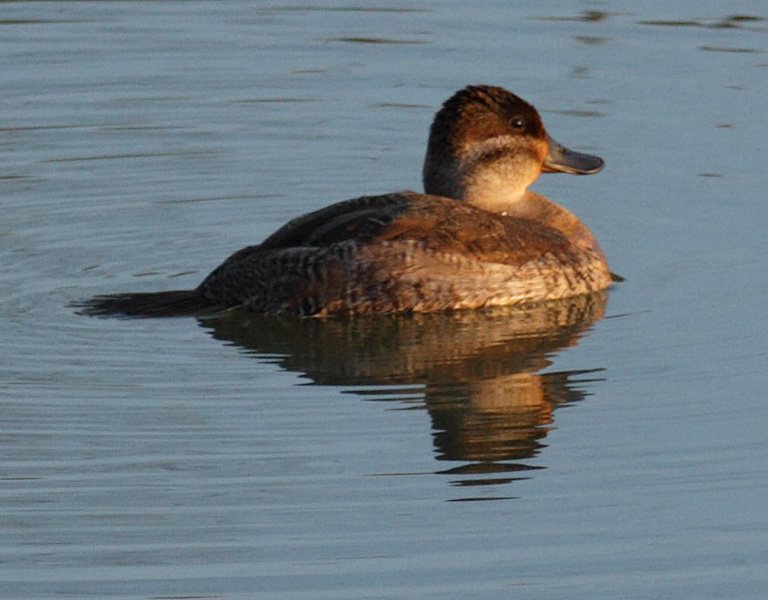
Ruddy Duck
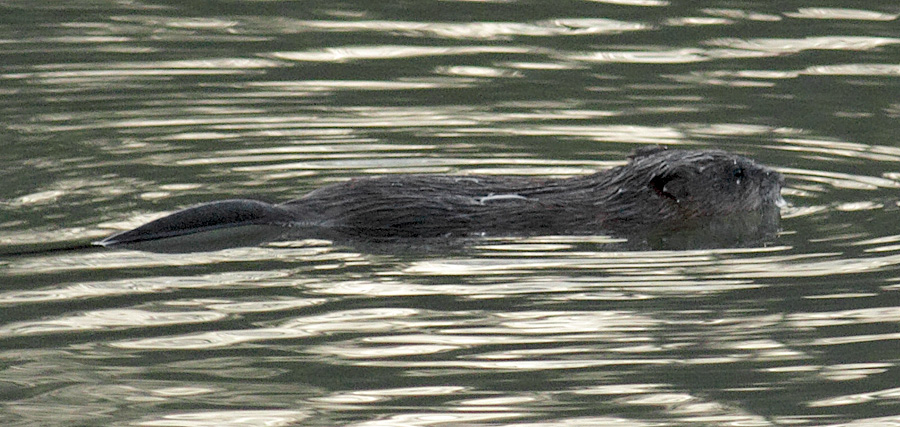
Beaver
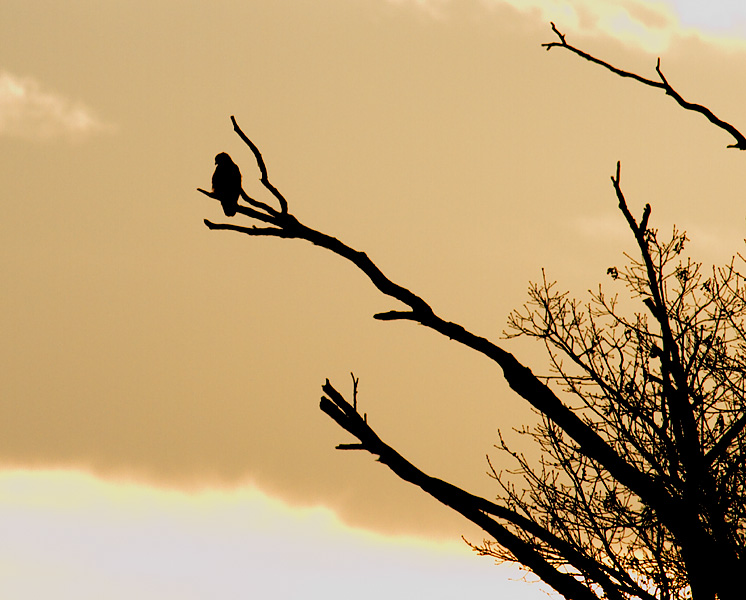
Red-tailed Hawk
E-mail comments on this report
Return to blog page home


































